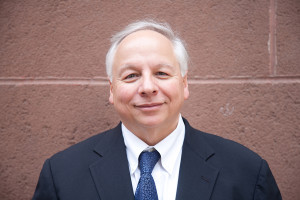The Rose Kennedy Greenway is now one of the most welcoming collections of open and civic spaces in downtown Boston and along its waterfront. This is not by accident.
Twenty-seven years ago, in the Boston 2000 Plan, leaders throughout the region started design plans to develop world-class park space in the areas where a highway existed. This ambitious vision created 17 acres of open space that is one of the best resulting features of the Central Artery/Tunnel project. Our challenge today is continuing the improvements to this cherished area and creating a long-term funding plan to support the operation, maintenance, programming and capital improvements.
The Central Artery Tunnel project happened in tandem with permitted commitments to establish and maintain the Greenway. Massachusetts officials approved the environmental permitting for the highway and tunnels by requiring 75 percent of the surface land created to be preserved as open space and also managed by a public sector parks department. The city of Boston, environmentalists and residents in many neighborhoods accepted this tradeoff as the mitigation. The Environmental Affairs certificate declared that the future state land should “not be left as dusty open lots, but must be fully developed as parks and recreational space … that will make the area an attractive urban open space.”
Our organization has had long, active, constructive influence on shaping the Rose Kennedy Greenway in Boston. We have had the opportunity to represent the business community of metropolitan Boston since 1989, first as the Artery Business Committee. The full board, Executive Committee and Greenway Abutters Committee proudly has invested time, money, design, planning and political capital in ensuring that the Central Artery/Tunnel project and Rose Kennedy Greenway be optimized. The very founding of A Better City is rooted in the need to preserve, protect and care for this important asset. A Better City was very active in helping to shape and advance the design, quality and buildout of these spaces.
A Better City was active in helping to shape the master plan and design of the Greenway and made sure the park design could reach the highest potential, despite limited funding available for non-construction aspects of the Central Artery/Tunnel project. Our work helped to preserve the water fountains, amenities and specifically that the parcels in Dewey Square would become more than just loam and seed. In 1998, we joined with the state, city of Boston, Move Massachusetts and other community groups to publish the Towards Boston 2000 report, which recommended that a dedicated entity be “established, commissioned, empowered and funded to manage implementation of and to sustain the Boston 2000 Plan” (the Greenway’s Open Space plan).
Roof Of The Artery
The Greenway is state land. These parcels are the roof of the Central Artery/Tunnel and continue to be owned by MassDOT. In 2010, A Better City commissioned Copley Wolff to provide a detailed assessment of the operations and maintenance costs for the Greenway area. Their estimate was $2.8 million each year. Each year, Massachusetts spends approximately $2 million to support the operations and maintenance of the parks, which is carried out through a lease with the nonprofit Greenway Conservancy. The conservancy supplements these state funds with their own fundraising and own-source revenue to support the operations and maintenance, programming, public art displays and the overall quality of the space. Recently, as a result of an expiring agreement with the conservancy, state government officials signaled a desire to reevaluate its role.
Abutters have collectively seen an increase in tax payments since the Greenway opened. The city of Boston, as we all know, primarily relies on real estate taxes for the municipal budget. The properties abutting the Greenway corridor that exceed $10 million in assessed value are contributing over $150 million in taxes to the city. In the past four years alone, this is a $28 million increase in net tax revenue for Boston. As a result of the 1 percent surcharge for the Community Preservation Act, these properties will be contributing an additional $1.5 million this year. These properties have been actively involved in real estate taxes relative to their own asset. In addition, the abutters have made charitable contributions to the Greenway Conservancy in excess of $100,000 each year.
Even with the taxes and contributions, the largest abutters have and are willing to entertain a structured contribution to the space. Far from shirking this responsibility, they are actively engaged in discussions to find the right collaboration with concerned parties. We continue to discuss the right approach, which will require all parties and owners involved – the state, city, Greenway Conservancy, philanthropy and abutters.
It is now 2017, and we have yet to secure a long-term financial plan to keep this success in place, even though it was called for in 1998. Years of planning and cooperation created the Greenway, which has dramatically improved downtown Boston and its waterfront. Residents, businesses, tourists and the public sector are all benefiting from vibrant open and civic spaces, and we look forward to working with all parties to enhance the future opportunities of the Greenway.
Rick Dimino is president and CEO of A Better City.




 |
| 


